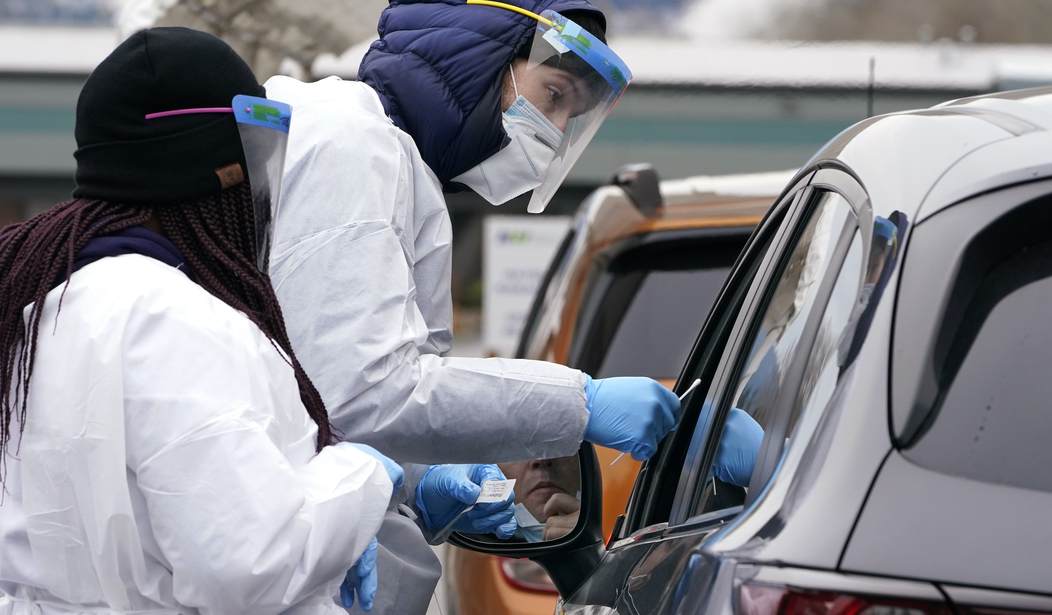We may be done with COVID but COVID isn’t done with us.
Although it might be mostly done with us.
It’s true that the amount of virus is rising in certain wastewater samples taken around the U.S., sometimes in gaudy terms percentage-wise. Cases are up 10 percent — or 1,000 percent! But with all 50 states at low baselines of infection, any incremental increase will look gaudy as a percentage. If you have one case locally this week and two the next, you’ve just recorded a 100 percent increase even though cases are nearly nonexistent.
I think that’s what we’re seeing here, as cases overall in the U.S. are currently at their lowest point since mid-July 2021. But one thing gives me pause.

Anything in the yellow-to-red spectrum, which represents 38 percent of all sampled sites, means that there’s more virus there than there was two weeks ago. Which … isn’t surprising, is it? Americans have decided that the pandemic is over. They’re flinging off their masks, in most jurisdictions with the CDC’s blessing. Many are doubtless making up for lost time over the past two years by socializing or traveling more lately. Fewer restrictions plus less social distancing is destined to produce a spike in cases, but not necessarily a major spike. So long as local hospitals aren’t stressed by it, it’s fine.
As one CDC official succinctly put it to Bloomberg, “These bumps may simply reflect minor increases from very low levels to still low levels.” Hot vax summer 2.0 is still a go.
I hope.
What gives me pause is that we tend to be a month or so behind Europe on COVID and various European countries are experiencing new spikes at the moment. Not tiny little bumps either in some cases; Germany’s daily case count is as high as it was during the winter Omicron surge while Austria, the Netherlands, and Switzerland are all on the way up. Some COVID hawks are grumbling that Europe moved too soon to drop restrictions after Omicron seemed to have passed. “The messaging from politicians is encouraging many people who were taking precautions to mix with others,” said one British academic. “It does seem very courageous, and indeed risky, to assume that the pandemic is over.”
David Leonhardt shares this snapshot of COVID cases in Europe. No one’s experiencing a vertical spike like they did over the winter — for that, you need to look east to Hong Kong — but all of these countries have high degrees of immunity and are still seeing higher cases despite the fact that the Omicron wave just washed through. The UK, in fact, is alleged to have more immunity than any country in the world. And even there, cases are rising:

Hospitalizations are up in the UK as well, with Scotland approaching its peak for the entire pandemic. Are Brits starting to get more severely ill again or is this a matter of people being hospitalized with Omicron, an ultra-contagious variant, rather than for Omicron?
Even if it’s the former, why should hospitalizations be rising?
Scientists have two explanations for the uptick in Europe. One is the phenomenon of people easing precautions, cutting loose in the belief that we’ve just endured an “exit wave” from the pandemic. The other is the emergence of BA.2, an Omicron subvariant that appears to be more contagious than even its hypercontagious parent strain. In Germany, BA.2 is responsible for more than half of new cases. In London, at last check, it caused 84 percent of new infections. But in the U.S., it’s still just 11 percent. As the subvariant begins to spread here, we might see a European-style rise in cases as well.
The good news is that people who’ve recovered from an Omicron infection should have solid protection against it. (BA.2 doesn’t seem to be any more dangerous either.) The bad news, per Leonhardt, is that “only” 45 percent or so of Americans are believed to have contracted Omicron this winter. More than half the population remains vulnerable to catching it.
Although, because Omicron 1.0 instilled so much population immunity so recently, it may be that BA.2 won’t spread as easily. It’s destined to run into many “dead ends” as it infects the recently recovered.
It sure would be nice to have an efficient, well-run national network of wastewater testing to detect early outbreaks as we cope with the new subvariant. But we’re not an efficient, well-run country. Good luck, everyone.







